How to Grow Herbs Indoors for Cooking
Learn how to grow herbs indoors for cooking with our beginner’s guide to windowsill gardens. We cover the best herbs, kits, and care tips.
From Sill to Skillet: A Beginner’s Guide to a Thriving Indoor Herb Garden
There is a simple, profound luxury in snipping a few fresh basil leaves to toss into your pasta sauce, or muddling a sprig of mint you’ve just picked for a refreshing drink. The burst of flavor and aroma from freshly cut herbs is something that their dried, dusty counterparts in a jar simply can’t replicate. As a huge proponent of bringing nature indoors and making every corner of a small home productive at Neat Tiny Home, I believe that an indoor herb garden is the single most rewarding and accessible starting point for anyone who wants to try their hand at growing their own food. It requires minimal space, a tiny budget, and it provides a daily dose of green, aromatic beauty to your home.
If you’ve ever thought you have a “black thumb” or that gardening is too complicated, this guide is for you. We are going to demystify the entire process and give you a complete, step-by-step roadmap. I’ll show you exactly how to grow herbs indoors for cooking, starting with the absolute basics of light, water, and soil. We’ll explore a curated list of the best herbs for a windowsill garden—the ones that are the most forgiving, productive, and delicious. We’ll even look at the pros and cons of an all-in-one indoor herb garden kit. My mission is to give you the knowledge and confidence to transform a sunny windowsill into a thriving, fragrant, and functional kitchen garden that will elevate your cooking and bring you joy every single day.
The Joy of a Kitchen Herb Garden: Fresh Flavor at Your Fingertips
Before we dig into the “how,” let’s talk about the “why.” A windowsill herb garden is so much more than just a collection of little green plants. It’s a living pantry. It’s the secret ingredient that can turn a simple meal into something special. The flavor difference between fresh and dried herbs is night and day. Fresh herbs contain volatile oils that dissipate quickly once they’re cut and dried, and it’s these oils that carry the intense aroma and nuanced flavor. Having a living supply of basil, parsley, or thyme means you can add that vibrant, fresh-from-the-earth taste to your meals at a moment’s notice. Beyond the flavor, it’s a beautiful addition to your home, a natural air freshener, and a wonderfully meditative hobby. The simple act of caring for your plants can be a calming and rewarding part of your daily routine.
Dispelling the “Black Thumb” Myth: Anyone Can Do This!
I want to address this right up front. The idea of a “black thumb” is a myth. People don’t have a magical, innate inability to keep plants alive. They just haven’t been taught the right basic principles yet. Plants are living things with a few simple, core needs: the right amount of light, the right amount of water, and the right kind of soil. If any of those three things are wrong, the plant will struggle. The problem isn’t you; it’s the conditions. The goal of this guide is to teach you those basic principles. By learning to “read” your plants and understand what they’re telling you, you’ll discover that you absolutely have a green thumb. It was just waiting for the right information. And learning how to grow herbs indoors for cooking is the perfect way to start building that confidence.
The Foundation of Success: Setting Up Your Indoor Garden
A thriving garden is built on a strong foundation. Getting these initial setup steps right is 90% of the battle. By creating the perfect environment for your herbs from day one, you make the ongoing care much easier and far more successful. These are the non-negotiable fundamentals that every beginner needs to master. Rushing this stage is the most common reason why new indoor gardens fail. Let’s walk through the three pillars of a happy herb home: light, soil, and a proper container.
Light is Everything: Assessing Your Windowsill’s Sun Exposure
This is the most critical factor for success. Most herbs are native to the sunny Mediterranean, and they crave light. To truly thrive and produce those flavorful oils, they need at least 6 hours of direct, bright sunlight per day. Before you do anything else, you must become a sun detective.
- South-facing windows are the absolute best. They receive the most intense, direct sunlight for the longest portion of the day. This is the prime real estate for sun-worshippers like basil, rosemary, and thyme.
- West-facing windows are the second-best option. They get several hours of strong, direct afternoon and evening sun.
- East-facing windows get weaker, direct morning sun. This can be a good spot for less demanding herbs like mint and parsley.
- North-facing windows receive no direct sunlight and are generally not suitable for growing herbs without the help of a grow light.
Choosing the Right Containers: The Critical Importance of Drainage
The number one killer of indoor herbs is overwatering, and the primary cause of this is a pot with no drainage. If water can’t escape, it will sit at the bottom of the pot, causing the roots to rot. Therefore, any pot you choose MUST have at least one drainage hole at the bottom. A saucer or tray underneath will protect your windowsill from water. In terms of size, a pot that is at least 6 inches in diameter is a good starting point for a single herb plant. This gives the roots enough room to grow. Terracotta pots are a great choice for herbs that like to stay on the drier side (like rosemary and thyme) because the clay is porous and allows the soil to dry out faster. Glazed ceramic or plastic pots retain moisture longer, which is better for thirstier herbs like basil and mint.
| Herb | Light Needs | Water Needs | Best For Cooking |
|---|---|---|---|
| Basil | 6-8+ Hours (Full Sun) | Likes consistently moist soil | Pesto, pasta sauces, salads, cocktails. |
| Mint | 4-6+ Hours (Tolerates some shade) | Likes consistently moist soil | Teas, cocktails (mojitos!), desserts, salads. |
| Rosemary | 6-8+ Hours (Full Sun) | Likes to dry out between waterings | Roasted meats (chicken, lamb), potatoes, breads. |
| Chives | 4-6+ Hours | Likes evenly moist soil | Eggs, potatoes, soups, as a garnish. |
| Parsley | 4-6+ Hours (Tolerates some shade) | Likes evenly moist soil | Garnish, sauces, salads, soups. |
The Top 10 Best Herbs for a Windowsill Garden
Now for the fun part! Choosing your plants. This list includes the easiest, most forgiving, and most useful herbs for any home cook. These are the proven winners, the ones that are most likely to give you a fantastic, confidence-boosting result. I highly recommend starting with small, healthy seedling plants from a local nursery or garden center, as this will give you a huge head start over growing from seed. These are, in my experience, the absolute best herbs for a windowsill garden.
1. Basil
The undisputed king of the kitchen garden. The sweet, aromatic leaves are essential for Italian cooking. Basil is a sun-worshipper and a bit of a drama queen; it will wilt dramatically when it’s thirsty but perks right back up after a good drink. The key to a happy, bushy basil plant is frequent harvesting. Pinch off the top sets of leaves regularly, right above a leaf node. This will encourage the plant to branch out, creating a full, bushy plant instead of a single, tall, lanky stalk.
2. Mint
Mint is practically indestructible, making it a perfect beginner herb. It’s so vigorous, in fact, that it should always be given its own pot, as it will quickly take over any container it shares. It’s less fussy about sunlight than other herbs and will do fine in an east-facing window. Harvest it often to encourage new growth. There are many varieties to explore, from spearmint and peppermint to fun flavors like chocolate mint. For great information on different herb varieties, a resource like the Farmer’s Almanac is invaluable.
7. Rosemary
The pine-scented, woody aroma of rosemary is incredible. This herb loves conditions that mimic its native Mediterranean habitat: tons of direct sun, excellent drainage, and being allowed to dry out completely between waterings. It is very susceptible to root rot, so do not overwater it! A terracotta pot is an excellent choice for rosemary. It can be a bit tricky to grow from seed, so I highly recommend buying a small plant to start with. It’s a perennial, so a happy plant can live on your windowsill for years.
Caring for Your Windowsill Garden: The Three Pillars of Herb Health
You’ve got your herbs potted up in a sunny spot. Now what? The ongoing care is simple and revolves around three key tasks: watering, feeding, and harvesting. Mastering these three pillars is the final step in learning how to grow herbs indoors for cooking successfully.
Pillar 1: Watering 101
As mentioned, overwatering is the most common cause of death for indoor herbs. Ditch the rigid watering schedule. Instead, use the “finger test.” Stick your index finger about an inch or two into the soil. If it feels dry, it’s time to water. If it feels moist, wait another day or two. When you do water, do it thoroughly. Take the pot to the sink and water it until you see water running freely out of the drainage holes. This ensures the entire root ball gets hydrated. Let it drain completely before returning it to its saucer. For more detailed guides, gardening websites like Gardenista offer fantastic advice.
Pillar 3: Harvesting for Health and Productivity
This is the best part! Harvesting your herbs is not only the reward, but it’s also essential for the plant’s health. Regular pruning encourages the plant to become bushier and more productive. For leafy herbs like basil, parsley, and mint, you should aim to prune or harvest about one-third of the plant at a time, always cutting just above a set of leaves. This will signal the plant to send out new growth from that point. For woody herbs like rosemary and thyme, you can snip off sprigs as needed. This “pruning as you harvest” method is the key to a long-lasting and productive indoor garden.
Tools of the Trade and the Allure of the Indoor Herb Garden Kit
While you don’t need many fancy tools, a few key items can make your life easier. For those who are nervous about starting from scratch or have less-than-ideal lighting, an all-in-one indoor herb garden kit can be a fantastic, foolproof option.
Exploring Hydroponic and LED Grow Light Kits
If your sunniest windowsill still only gets a few hours of light, a kit with a built-in LED grow light is a game-changer. These kits provide full-spectrum light that mimics the sun, allowing you to grow light-loving herbs like basil anywhere in your home. Many of these kits, like the popular AeroGarden systems, are also hydroponic, meaning the herbs grow directly in water and a nutrient solution. This eliminates any guesswork with soil and watering, making them an incredibly easy, albeit more expensive, way to guarantee success. This is a high-tech solution for how to grow herbs indoors for cooking, perfect for the modern home.
Frequently Asked Questions (FAQ)
My herbs are getting long and “leggy.” What am I doing wrong?
“Leggy” or spindly growth with lots of space between the leaves is a classic sign of insufficient light. The plant is literally stretching itself out trying to find more sun. Your first step should be to move it to a sunnier window. If you don’t have a sunnier spot, you’ll need to supplement with a grow light. Regular, aggressive pruning can also help encourage bushier, more compact growth.
I have tiny little flies buzzing around my herb pots. What are they?
Those are most likely fungus gnats. They are annoying but mostly harmless to the plant. They are attracted to and breed in consistently moist soil. Their presence is almost always a sign that you are overwatering. Allow the top two inches of the soil to dry out completely between waterings. This will kill their larvae and break their life cycle. You can also find yellow sticky traps at any garden center to catch the adults.
Can I grow different herbs together in one long planter box?
You can, but you have to be a smart matchmaker! The key is to group herbs that have similar needs. It’s a great idea to plant the Mediterranean “drought-tolerant” herbs together—rosemary, thyme, sage, and oregano. Then, in a separate planter, you can group the “water-loving” herbs like basil, mint (though it’s still best on its own), and parsley. This makes watering much easier and keeps all the plants happy.
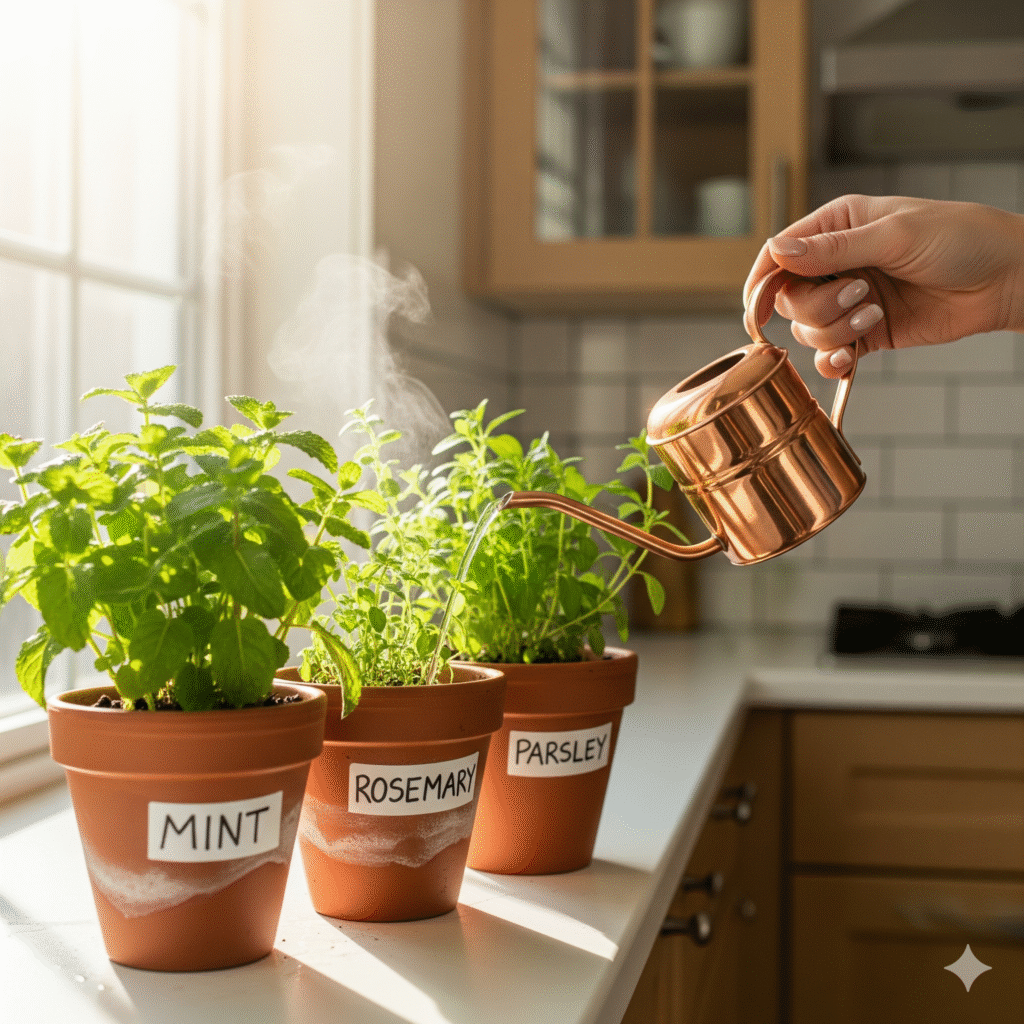
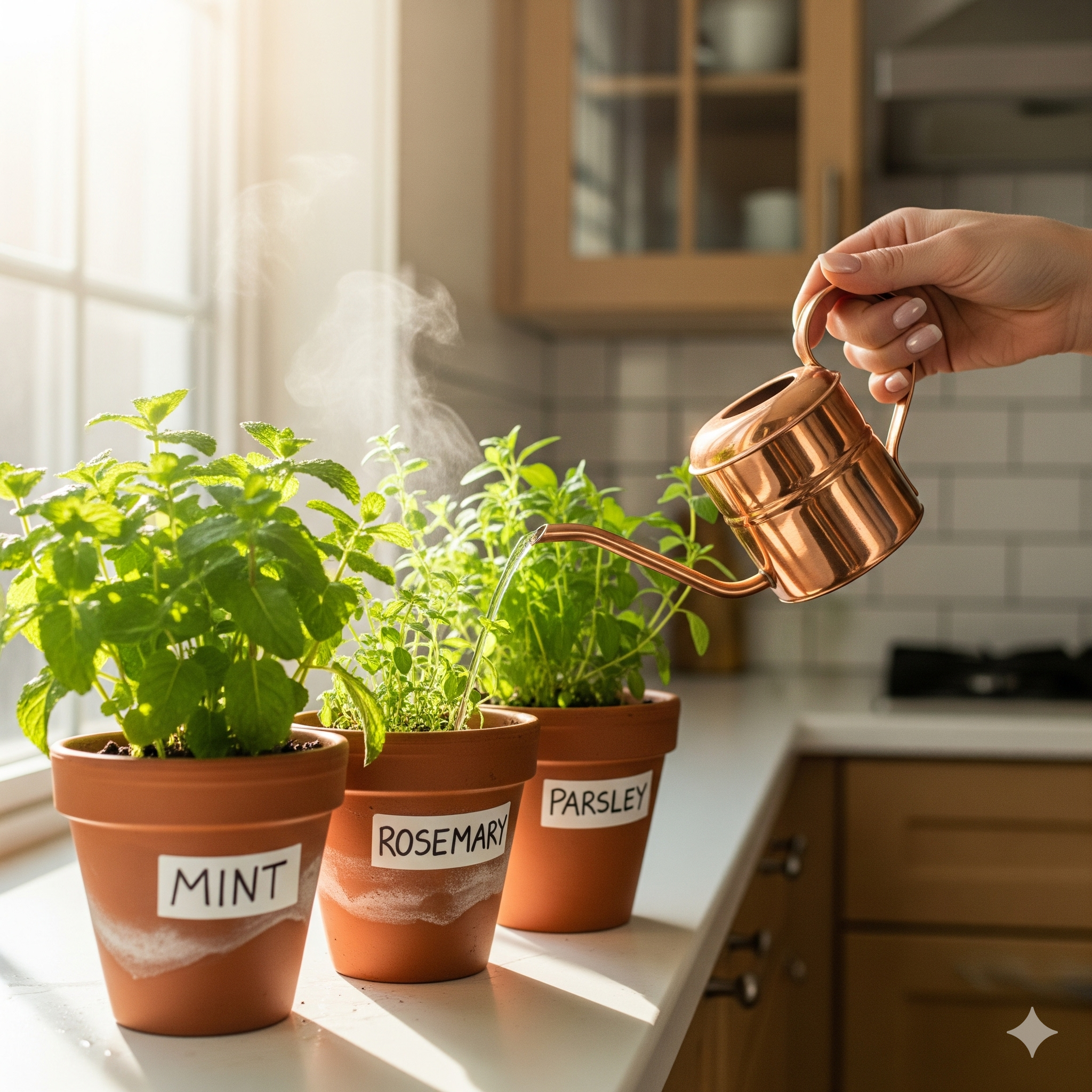
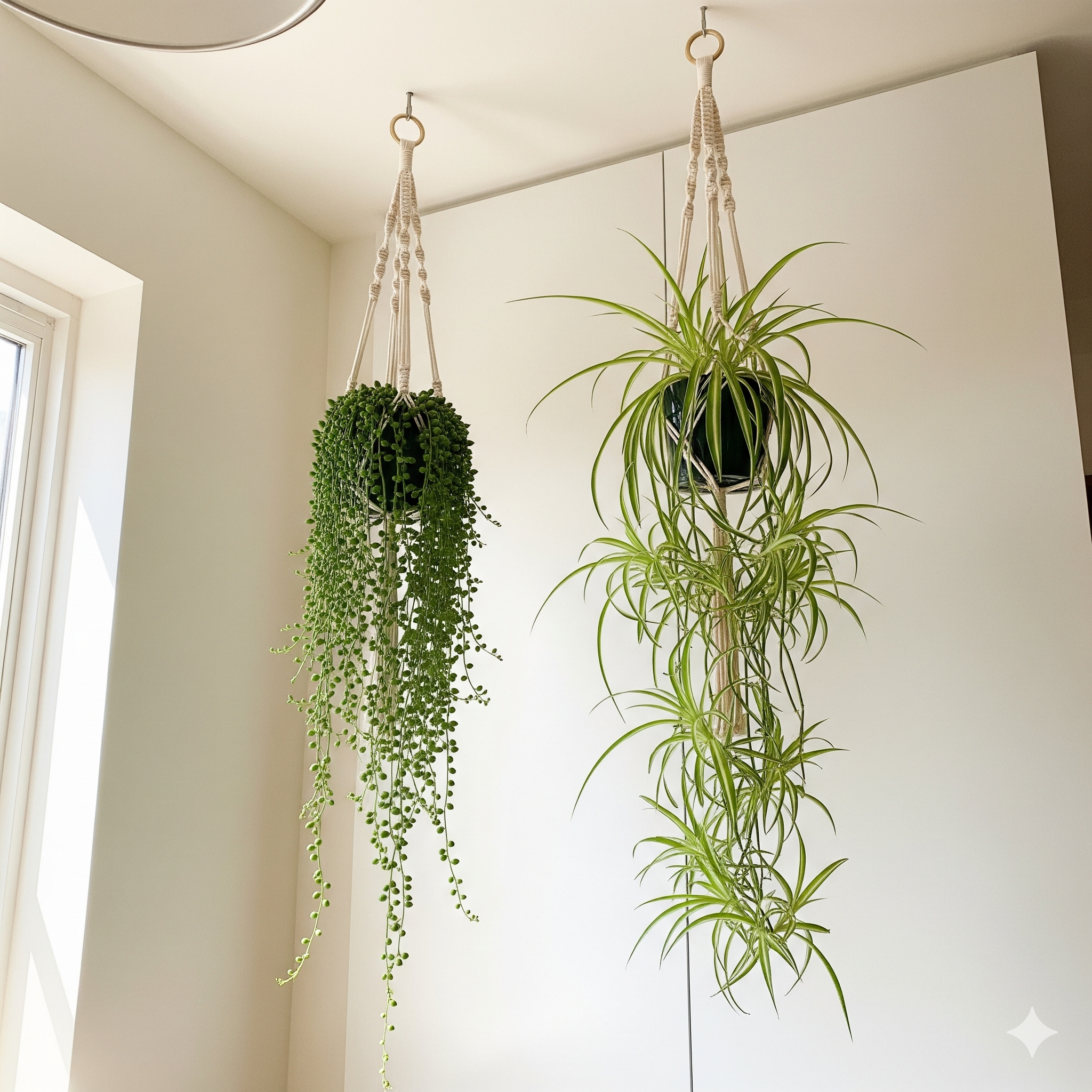
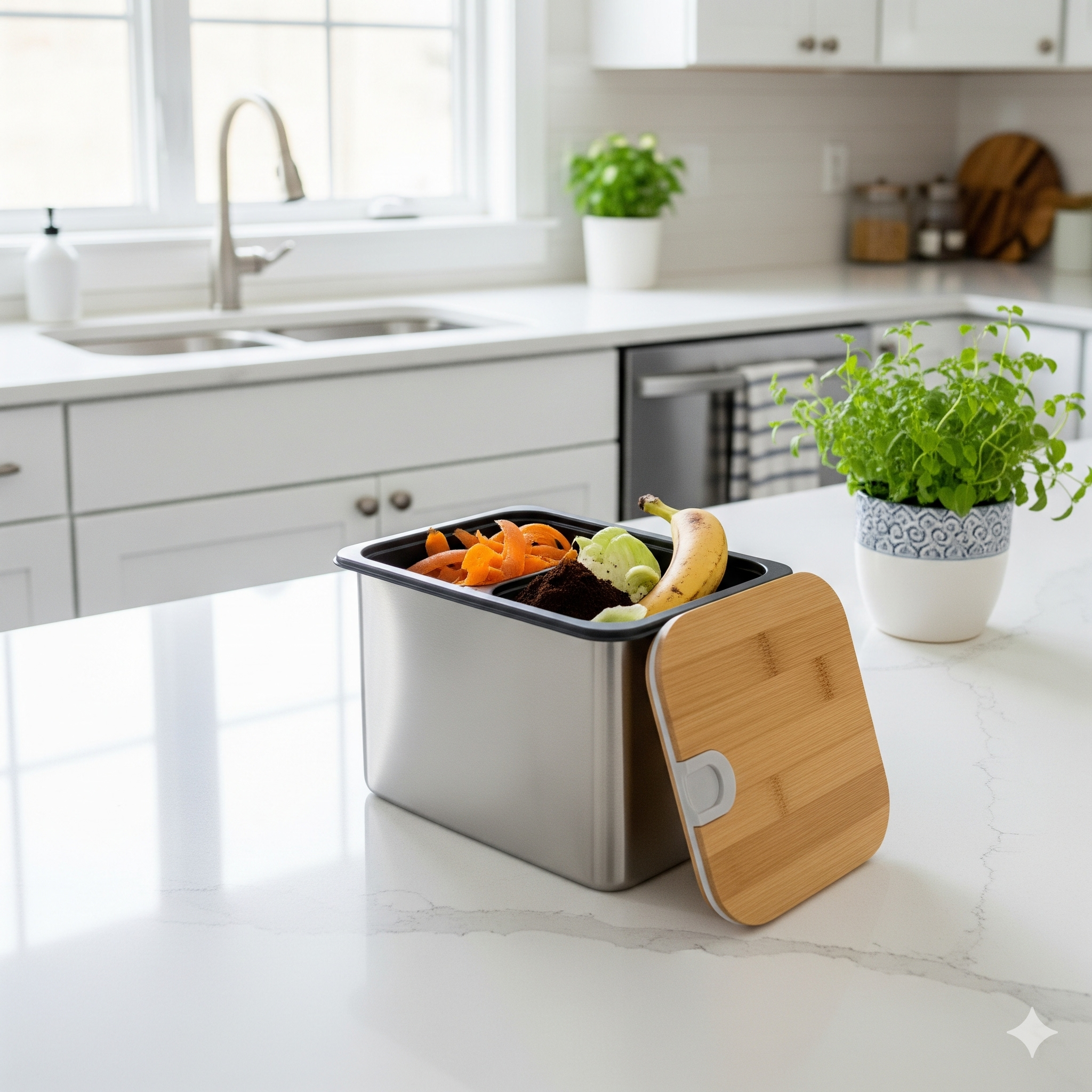
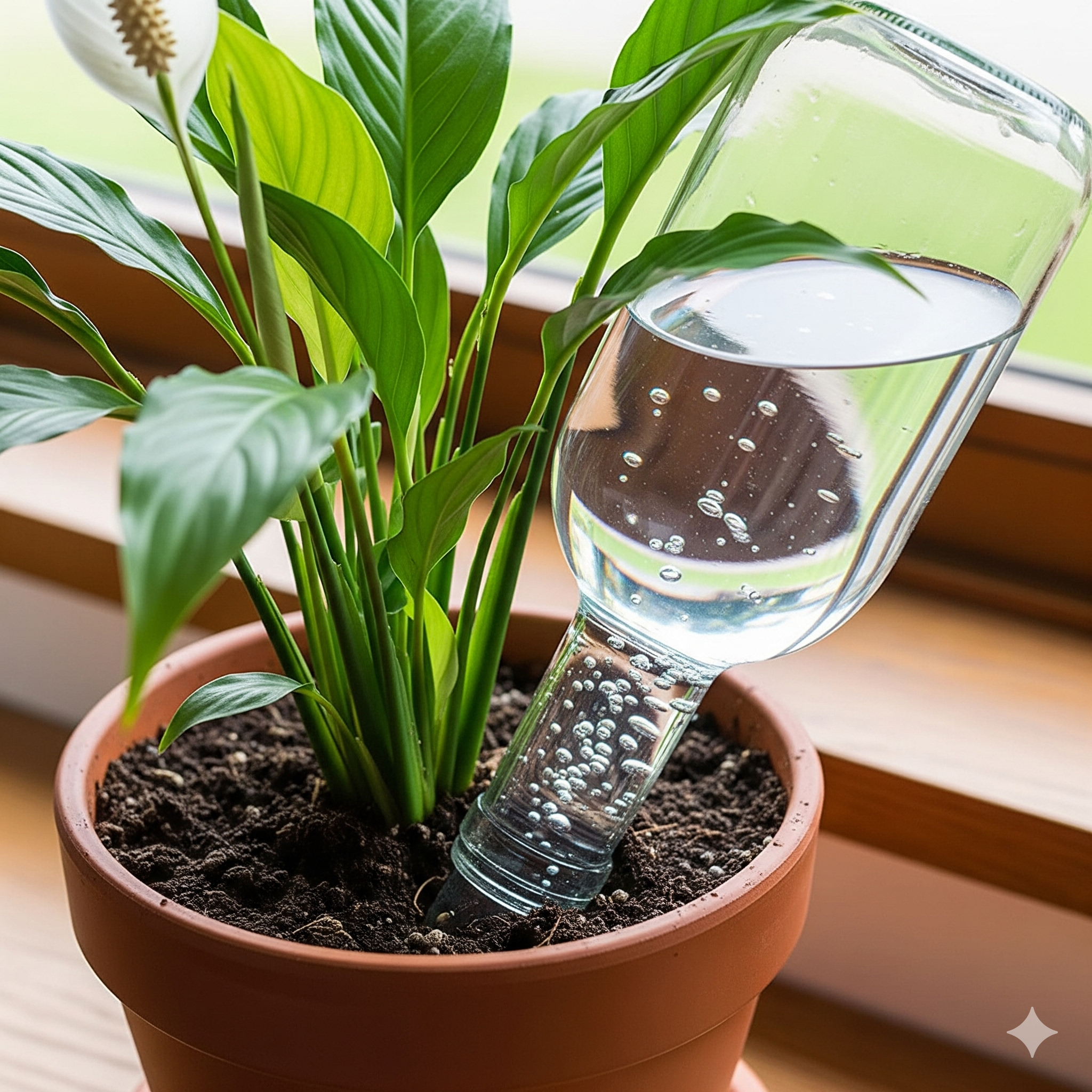
Post Comment